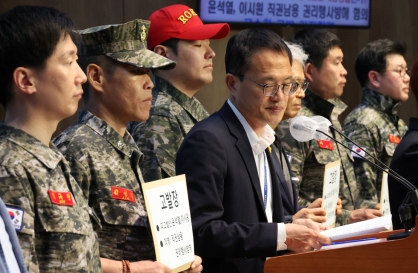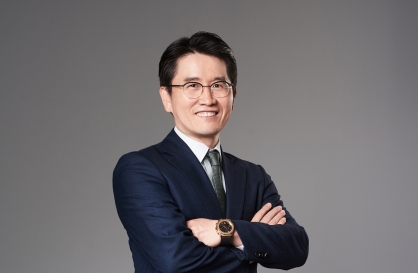WASHINGTON, Dec 22, 2011 (AFP) - A landmark clinical trial that showed HIV drugs can be as effective as condoms in preventing transmission of the virus that causes AIDS was declared Science magazine's breakthrough of the year on Thursday.
Other top achievements of 2011 included a Japanese spacecraft's return to Earth with dust from an asteroid, progress toward a malaria vaccine and discoveries about modern humans' gene links to cavemen.
The lead story of the year was an international trial, coined HPTN 052, which showed that people taking anti-retroviral drugs reduced the risk of heterosexual transmission to partners by 96 percent.
The breakthrough was described by some experts as a tipping point in the fight against AIDS, 30 years after the epidemic first surfaced.
"People were interested in the idea of treatment as prevention, but it created a hurricane-force wind behind the strategy," said lead investigator Myron Cohen of the University of North Carolina's School of Medicine.
The trial began in 2007, enrolling 1,763 heterosexual couples -- in which one partner was HIV positive -- from Botswana, Brazil, India, Kenya, Malawi, South Africa, Thailand, the United States and Zimbabwe.
The magazine said the trial will have "profound implications for the future response to the AIDS epidemic." HIV/AIDS infects an estimated 33 million people worldwide and killed 1.8 million people in 2009.
"The HPTN 052 results and other recent successes have raised hopes that combining such interventions can now end AIDS epidemics in entire countries, if not the world," the journal said.
The nine other leading advances of 2011:
-- Japan's Hayabusa spacecraft survived a host of technical failures but returned to Earth, albeit three years late, with a dusting of particles from the Itokawa asteroid. An analysis showed that solar wind discolors asteroids.
-- Following 2010 studies that showed Europeans and Asians inherited two to six percent of their DNA from Neanderthals, new analyses showed that breeding with cavemen gave modern humans an immune boost, and raised new questions about whether the dextrous tool-maker Australopithecus sediba is our direct ancestor.
-- Japanese researchers mapped Photosystem II, a protein that plants use to split water into hydrogen and oxygen atoms, a structure that could lead to powerful advances in clean energy.
-- Astronomers detected pristine clouds of hydrogen gas much like that from the first few hundred million years after the Big Bang. Another team finds a star with almost no metals, like the earliest stars in the universe, suggesting pockets of deep space have survived "unscathed amid eons of cosmic violence.
-- Researchers gained a new understanding of the microbes that dwell in the human gut, with some thriving on high-protein diets while others prefer vegetarian fare.
-- The search for the world's first malaria vaccine RTS,S, received a boost with the release of early results from a major clinical trial showing it cut risk by about half in African children.
-- Strange discoveries in deep space included a cluster of six large planets orbiting a star named Kepler 11 about 2,000 light-years from Earth, a gas giants that orbits in the opposite direction of its parent star, 10 planets that seem to orbit no stars and all, and one planet that is orbiting two stars.
-- Industrial chemists designed a host of new porous minerals, called zeolites, which could save money and offer a new boost to the oil and gas industry, air and water purification processes and household laundry detergents.
-- Getting rid of old cells may help improve life quality, according to scientists who using lab mice discovered that clearing these senescent cells from the body can delay cataracts and muscle weakness.
<한글기사>
올해 최고 성과는 '에이즈 치료제'
세계적인 과학저널 사이언스가 '올해의 10대 과학성과'를 발표했다.
23일 사이언스 보도에 따르면 에이즈 감염을 100%에 가깝게 막을 수 있는 임상 실험 결과가 올해 최고의 과학연구로 선정됐고, 한국 KAIST 과학팀의 '제올라이트' 연구도 열 손가락 안에 꼽혔다.
미국 노스캐롤라이나대 연구팀은 지난 2007년부터 미국, 브라질, 인도, 케냐 등 9개국에서 모집한 에이즈 보균자-미감염자 커플 1천763쌍을 대상으로 'HPTN 052' 프 로젝트를 진행했다.
연구팀은 감염 초기에 항레트로바이러스제를 투여하면 병세가 악화된 후에 처방 한 것보다 미감염 배우자에 인간면역결핍바이러스(HIV)가 옮을 확률이 96%나 떨어진다고 밝혔다.
대표적인 에이즈 치료제인 항레트로바이러스제는 그동안 간 손상 등의 부작용 때문에 감염 초기에 환자에게 투여하는 것이 바람직한가를 두고 의료계의 논란이 있었다.
그러나 이번 HPTN 052 프로젝트의 결과를 통해 감염 초기에 항레트로바이러스제 를 처방하는 것이 에이즈 확산을 막는데 도움이 된다는 사실이 분명해졌다.
국내 KAIST 연구팀의 제올라이트 관련 연구도 올해 10대 과학성과로 꼽혔다.
KAIST 화학과의 유룡 교수팀은 벌집 모양으로 큰 구멍(메조 나노기공)과 작은 구멍(마이크로 나노기공)을 규칙적으로 배열해 제올라이트를 만드는 데 성공했다.
제올라이트는 실리카(모래 주성분)와 알루미늄으로 이뤄진 결정형 광물을 의미하 는데, 이온 교환 성질과 흡착력 때문에 특정 물질을 제거·농축·회수하는 촉매로 주로 사용된다.
특히 유 교수팀이 개발한 벌집 모양의 제올라이트는 기존의 촉매 기능을 획기적 으로 개선했다는 평가를 받았다.
또 실험쥐의 노화세포를 제거하면 백내장과 근육 손실 등의 노화 현상이 지연된 다는 연구 결과와 세계 최초의 말라리아 백신인 'RTS.S'가 아프리카 어린이의 말라 이아 감염률을 절반으로 감소시킨다는 연구가 10대 성과에 선정됐다.
이밖에 사이언스는 ▲일본 하야부사 탐사선의 귀환 ▲현생 인류의 기원 연구 ▲ 식물의 광합성 핵심 단백질 구조 ▲우주 대폭발 시 초기가스 발견 ▲인간의 장내 세균 연구 ▲두 개의 해가 뜨는 행성 등 외계 행성 발견 등을 10대 성과로 꼽았다.





![[Weekender] How DDP emerged as an icon of Seoul](http://res.heraldm.com/phpwas/restmb_idxmake.php?idx=644&simg=/content/image/2024/04/25/20240425050915_0.jpg&u=)
![[Herald Interview] Guggenheim Museum makes a push for technology-based art with LG](http://res.heraldm.com/phpwas/restmb_idxmake.php?idx=644&simg=/content/image/2024/04/26/20240426050608_0.jpg&u=20240428114717)




![[Music in drama] An ode to childhood trauma](http://res.heraldm.com/phpwas/restmb_idxmake.php?idx=644&simg=/content/image/2024/04/25/20240425050929_0.jpg&u=)





![[Herald Interview] Mistakes turn into blessings in street performance, director says](http://res.heraldm.com/phpwas/restmb_idxmake.php?idx=652&simg=/content/image/2024/04/28/20240428050150_0.jpg&u=20240428174656)
